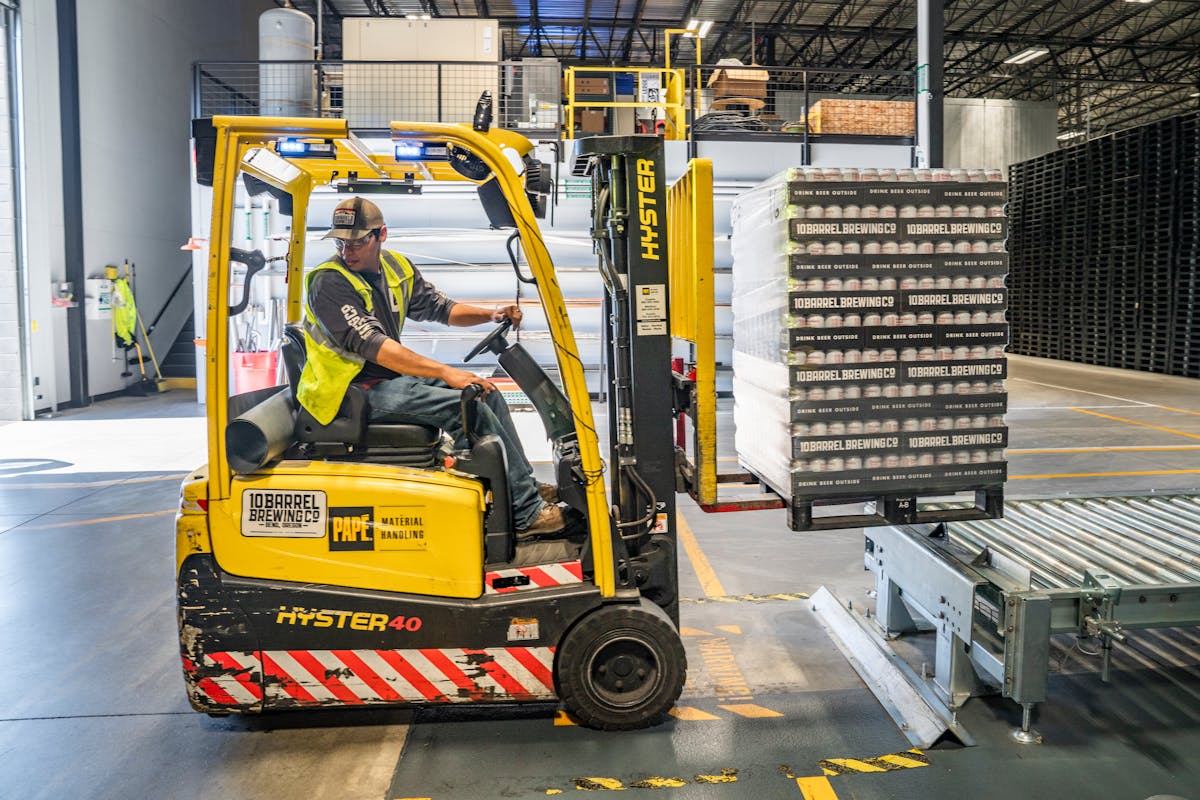- Technological advances in material handling include energy-efficient electric forklifts and autonomous guided vehicles to improve efficiency.
- Smart sensors and warehouse management systems streamline operations by offering real-time data and inventory management solutions.
- Robotics in material handling enhances productivity and worker safety by automating heavy lifting and repetitive tasks.
- Advanced data analytics, encompassing real-time, historical, predictive, and prescriptive data, optimizes material handling operations for future growth.
In today’s fast-paced business world, efficiency and productivity are critical factors in staying ahead of the competition. One industry that has seen significant advancements in technology is material handling equipment. From automated guided vehicles to smart sensors, technology has transformed the way businesses handle and move materials within their facilities. This blog will explore how technology is revolutionizing material handling equipment and the benefits it brings to companies.
More Modern Material Handling Vehicles
Technology has led to the development of more modern and versatile material-handling vehicles used in a variety of industries around the world. For example, electric forklifts are becoming increasingly popular in Singapore’s logistics industry as they are more energy-efficient, emit fewer emissions, and have lower operational costs compared to their traditional diesel counterparts.
Additionally, they won’t break the bank, thanks to their lower maintenance costs. You can save even more by opting for a forklift rental in Singapore instead of purchasing one. This is especially beneficial for small and medium-sized businesses that may not have the resources to invest in expensive material-handling equipment.
Other modern material-handling vehicles, such as automated guided vehicles (AGVs), have significantly increased efficiency and productivity in warehouses and distribution centers. AGVs are fully autonomous, self-driving vehicles that can navigate through a warehouse or facility using sensors and programming. They can be used for tasks such as transporting materials from one location to another, loading and unloading trucks, and even inventory management.
Smart Sensors
Another technological advancement in material handling equipment is the use of smart sensors. These sensors can be attached to various types of equipment, such as forklifts or conveyor belts, to monitor performance and detect any potential issues before they become significant problems.
For example, sensors can track the temperature of machinery to prevent overheating or monitor inventory levels to ensure timely restocking. By providing real-time data and alerts, smart sensors help businesses optimize their operations and minimize downtime.

Warehouse Management Systems (WMS)
Technology has also revolutionized how warehouses manage their inventory and operations through warehouse management systems (WMS). These software platforms integrate with other technologies like AGVs and smart sensors to streamline processes such as order fulfillment, inventory tracking, and labor management. WMS provides real-time visibility into warehouse activities, allowing businesses to make informed decisions that improve efficiency and accuracy in material handling.
Robotics
The use of robotics in material handling equipment has also transformed how businesses move goods within their facilities. Robotic arms can lift heavy items with precision and speed, reducing manual labor and increasing throughput.
Collaborative robots, or cobots, work alongside human employees to perform repetitive tasks safely and efficiently. The integration of robotics into material handling equipment not only improves productivity but also enhances worker safety by automating hazardous tasks.

Data Analytics
Technology has enabled businesses to collect vast amounts of data on their material handling operations through IoT devices and software applications. By analyzing this data using advanced analytics tools, companies can identify trends, patterns, and areas for improvement in their supply chain processes. Specifically, these are the four types of data that businesses can collect and analyze to improve material handling operations:
Real-Time Data
This includes data collected from sensors, RFID tags, and IoT devices in the warehouse. It provides immediate insights into equipment performance and inventory levels.
Historical Data
This is past data that can be used to identify trends and patterns in material handling operations. By analyzing historical data, businesses can make informed decisions and predict future needs.
Predictive Data
With the help of machine learning algorithms, businesses can use predictive data to anticipate potential equipment failures or inventory shortages. This allows them to take proactive measures to prevent costly downtime.
Prescriptive Data
Prescriptive data takes predictive analytics a step further by providing recommendations on how to optimize processes and improve efficiency based on insights from historical and real-time data.
Data analytics has become an essential tool for businesses to make data-driven decisions and continuously improve their material handling operations.
The integration of cutting-edge technologies in material handling equipment is revolutionizing the logistics and warehouse industries by increasing efficiency, improving safety, and optimizing operations. From the emergence of electric forklifts and AGVs to the application of smart sensors, warehouse management systems, robotics, and advanced data analytics, these technological advancements are not just trends but essential components for businesses aiming to stay competitive in the fast-paced market.
Organizations that recognize and leverage these technologies will find themselves ahead of the curve, benefiting from streamlined operations, reduced costs, and enhanced productivity. The future of material handling is here, and it is technology-driven, underscoring the importance of adopting these innovations to ensure business success and growth.
